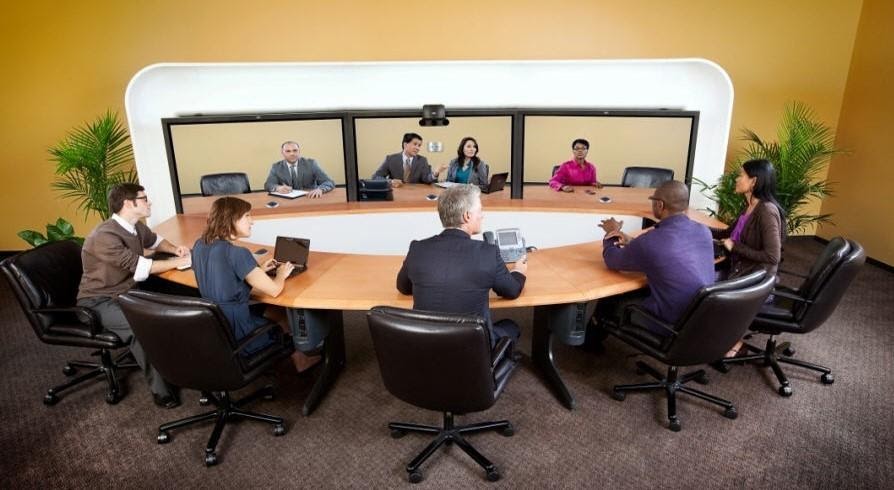KM Component 31 – Conferencing and Telepresence

Stan Garfield
Virtual teams, including those with a focus on knowledge exchange, have become widespread. In the past, teams were often located in the same location and could meet in person whenever they wanted.
Now they are often widely distributed across geographies, may never have met the other team members in person, and communicate primarily through email, instant messaging, and telephone calls. There are various virtual channels which can be effective venues for knowledge sharing:
Web conferencing provides a virtual meeting room with online, real-time tools designed to allow teams to share presentations, applications, and white boards during meetings.
Videoconferencing is technology that allows two or more locations to communicate by simultaneous two-way video and audio transmissions.
Telepresence is technology that allows a person to feel as if they were present, and to give the appearance of being present, at a place other than their true location.
Conference calls are typically used for virtual teams to meet regularly. To enhance the sharing that can be done during a conference call, virtual meeting rooms allow participants to view common presentations, share applications, write on virtual white boards, conduct polls, engage in group chats, and see one another on video.
Team spaces can be used effectively for typical presentations by posting slides in the meeting space prior to the conference call, asking participants to download the files, and having presenters regularly refer to the current slide number. This avoids the need for a virtual meeting room. This can also be done on the Internet using a free conference call provider (see below) for audio, SlideShare for slides, and Twitter for group chat. See How to Avoid Webinar Failures for more on this approach.
Web Conferencing
When a live demonstration will be performed, when notes will be taken that need to be shared in real time, or when there is a need for video or other dynamic visual content, a virtual meeting room or video conference is required.
Web conferencing tools include:
- Adobe Connect
- BlueJeans by Verizon
- Google Meet
- GoToMeeting
- HCL Sametime
- LoopUp
- Microsoft Skype
- Microsoft Teams
- Slack Video Conferencing
- TeamViewer Meeting
- WebEx by Cisco
- Zoom
Telepresence

Advances in video conferencing technology allow more closely approximating face-to-face meetings. Participants actually feel as though they are in the same room despite being in different locations.
The major telepresence providers are:
Free Conference Calls
These started out for audio dial-in only. Some providers of free conference call services have expanded their offerings to include web conferencing.
Extended Features
Audio only

Stan Garfield
Please enjoy Stan’s additional blog posts offering advice and insights drawn from many years as a KM practitioner. You may also want to download a copy of his book, Proven Practices for Implementing a Knowledge Management Program, from Lucidea Press. And learn about Lucidea’s Inmagic Presto and SydneyEnterprise with KM capabilities to support successful knowledge curation and sharing
Similar Posts
Lucidea’s Lens: Knowledge Management Thought Leaders Part 79 – David Garvin
KM expert David Garvin was a proponent of organizational learning to counter unpredictability in market forces and technology advances.
Lucidea’s Lens: Knowledge Management Thought Leaders Part 78 – Carl Frappaolo
KM expert Carl Frappaolo was the creator of Delphi’s Knowledge Management Methodology (KM2)
Lucidea’s Lens: Knowledge Management Thought Leaders Part 77 – Leif Edvinsson
Leif Edvinsson, Professor Emeritus at Lund University in Sweden, specializes in Intellectual Capital Management of Enterprises, Cities, and Nations
Lucidea’s Lens: Knowledge Management Thought Leaders Part 76 – Seth Earley
Seth Earley works in cognitive computing, knowledge engineering, data management systems, taxonomy, ontology, and metadata governance strategies.

Leave a Comment
Comments are reviewed and must adhere to our comments policy.
0 Comments